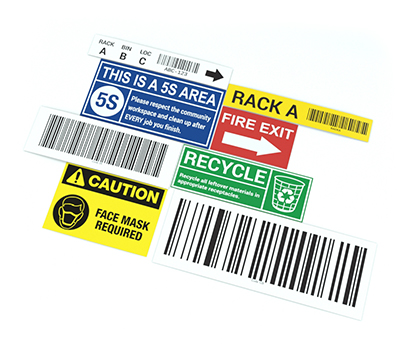
Wire marking is an essential practice for electricians and maintenance personnel, being a key aspect of electrical safety while also enhancing efficiency. In this article, we discuss examples of some of the most effective wire marking techniques which can be implemented to create a safer working environment.
Labeling
A label should provide important details, helping technicians carry out their roles more efficiently by knowing which wires they are connecting to. Using clear and concise language to portray key information such as the function of the wire, circuit number, and voltage, all workers dealing with the electrics can easily identify each wire and work more effectively.
Color coding
Electrical safety wire color coding aligns with standards such as the National Electrical Code (NEC), creating a standardized system across the industry which makes it easier for workers to troubleshoot any problems more easily. With different colors representing different purposes or voltages, an electrician can quickly identify the different wires and proceed according to safety protocols. In situations where the function of wires may change at junctions or endpoints, using colored bands at specific points along the wire helps to communicate this.
Directional markers
Directional markers are used to show the direction of current within a wire, often used in large-scale electrical installations such as power distribution grids. Being a crucial element to make sure that connections are made in the right sequence, electricians can carry out their duties more safely, knowing the correct sequence to follow as they work.
Cable sleeves
In scenarios where multiple wires need to be kept together, they can be identified as a group using cable sleeves. An example of this would be a server room; to avoid multiple wires all crossing each other and creating an untidy system, cable sleeves can be used to keep together collections of cables that can be more easily maintained or troubleshooted when together. To maximize efficiency, the cable sleeves can then be labeled with codes or colors to make them easily recognizable in busy systems.
Unique identifiers
Utilizing numeric or alphanumeric codes can provide an organized way to label different wires in a busy environment. As an alternative to color codes, using unique identifiers is great for systems with a high volume of cables as systems can be implemented depending on business needs. For example, codes may be used that correspond to locations, functions, and equipment type so maintenance workers can easily find the information they need.
Heat shrink tubing
By sliding a tube over a wire and heating it, this technique shrinks the tubing to the wire so it closely adheres and offers additional protection to the wiring. This is particularly effective in situations where wires may be exposed to extreme temperatures or harsh conditions, enforcing durability for a more long-lasting solution. As well as offering protection, heat shrink tubing marks the wire and can follow an organized system to help with identification.
Similar Questions
- How do wire color codes improve safety?
- What are wire marking standards?
- What are wire color codes?
- How does wire marking improve safety?
- How can cables be effectively organized?
- What are the hazards associated with improper wire marking?
- What is wire marking?
- What is the Color of the Ground Wire?
- Does OSHA regulate wire marking?

